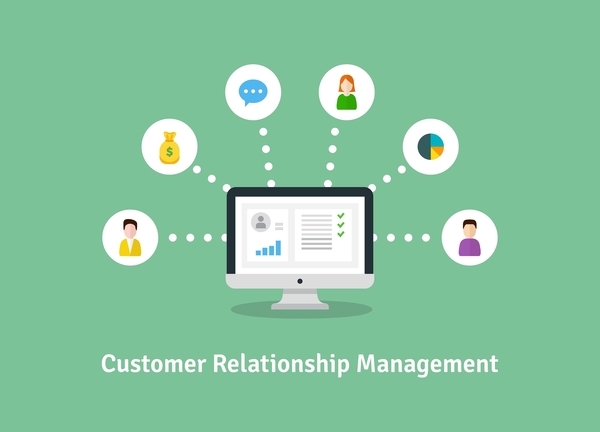Over the last few years, online businesses, also known as eCommerce, has become an integral component of shoppers’ lives. In 2019 alone, an estimated 1.92 billion people purchased goods or services online and e-retail sales surpassed 3.5 trillion U.S. dollars worldwide. These numbers are ever growing—with US ecommerce sales growing 14.9% in 2019.
If your retail store does not currently have a digital storefront, then you’re seriously missing out on a huge opportunity. It’s a slice of pie that other retailers are getting that you aren’t. It doesn’t matter if you sell meat or art, or you sell soft good and your store is from your parents (mom-and-pop store), if you want to stay in business you must go online.

The benefits of running a retail store online
Making the switch to an online store from a retail store can be intimidating. We get it. Those who aren’t familiar with the technical aspects of setting up a digital storefront or those who have limited resources to invest in software and equipment may struggle with the idea of establishing one.
Regardless, building an online presence can drive numerous benefits, including:
- Business continuity in an increasingly digital retail environment
- Taking orders from existing or new customers from virtually anywhere
- The ability to shoulder global crisis, like the pandemic
- Servicing both locally and globally
Why is important technology in retail? There are so many reason, but we will tell you the most important for us: To improve customer service.
Customers expect you to be able to tell them if you have a product in stock or on order. They don’t want to wait while you wander through the storeroom or phone the warehouse.
Having an electronic inventory system allows you to answer customer questions with just a few clicks. You can also check the inventory held by different stores if you have multiple locations.
To help retailers like you, here are some effective digital tools (and software) that can greatly improve your sales this year and beyond.
eCommerce software
eCommerce software helps set up a digital storefront for your retail store business. Not only that, it helps manage the online retail day-to-day operations. Typically, it offers features for business owners such as website and UX/UI designs, product listing, shopping cart, catalogue management, inventory management, order management, and order fulfillment.
As the pandemic pushes on, online sales have dramatically increased, growing 46% year over year. Adopting eCommerce software is key to any retail store business who don’t want to fall behind and shut down its doors.
Don’t worry though: for retailers that can’t afford to invest in software right now, there are also multiple free and open-source eCommerce tools available at your disposal. Of course, the software can be free but setting it up takes time and patience. However, it is an investment that can have fast returns due to the currently Covid-19 pandemic situation.
Recommendation: The platform that you choose had to enable you to sell what you wanted, where you wanted, how you wanted. This meant they had to be able to deal with both digital and physical goods, integrate with multiple different payment processors, and offer a way to handle the various national and international sales taxes (if you are thinking of selling internationally).

Accounting software
A way of thinking about accounting software is to imagine it as the digital and automated version of the sales ledger or general ledger. Accounting software helps a retail store track billing, accounts receivable, accounts payable, etc.
There are so many aspects to running a retail store. If your accounting is still completed manually, then you’ve got a problem. Consider getting off the excel spreadsheets and adopt software that helps automate any administrative redundancy. This can be manually logging receipts, calculating sales income, inputting/calculating taxes, and even matching receipts and invoices during reconciliation.
Over time, these tasks can take away from the limited time you have in a day, causing you to do much more admin work than you’d like.
Tracking billing, accounts receivables, and payables, etc. are administrative tasks that can take up the bulk of your day if mismanaged. If you’re considering running your retail store online, adopting simple and affordable accounting software is a must if you haven’t already started using one.
Check out this free and low-cost accounting and invoicing software for your business. If you aren’t using one of them we recommend going for any of the free options.
CRM software
Customer relationship management (CRM) software helps sales teams keep track of leads, contacts, and opportunities. It helps retail store owners better manage customer interactions and streamline communication across multiple channels. This includes emails, messages, social media, and calls.
CRM software can also offer various other features such as contact management, interaction tracking, lead management, calendar, and document storage. It’s a fantastic tool for retailers to manage and analyze their own interactions with their past, current, and potential future customers.
What do we recommend if you are just starting out? Google Sheets. While dedicated CRM software includes added functionality, you can easily set up a Google Sheets CRM to keep track of the most important information if you are just starting out.
Here’s a list of some of the best CRM software this year that will help you with your digital strategy.
Field Service Management software
Field service management (FSM) software allows retailers to effectively manage a mobile workforce out in the field. For example, if a retail store mainly operates locally, they can use such tools to both manage order fulfillment and ensure delivery agents can find customer addresses quickly. FSM tools typically offer features like work order management, dispatching, and payment collection.
At its core, FSM is simply any system that is designed to keep track of the various components of field operations. These components typically include inventory management, vehicle tracking, scheduling, customer portals, and more. In terms of the software-as-a-service sector (SaaS), management of these components is usually controlled through a cloud-based portal which can be accessed from mobile devices while field technicians are on the job. Everything from tracking driver efficiency to empowering customers can often be controlled using a sophisticated FSM solution.
What should you do with your retail store?
As the numbers of sales continue to grow in the digital storefront space, many retail stores are heading into two routes: risk closing down or switching their stores online. Luckily, there are a plethora of digital tools available for retail businesses to take advantage of. Some key ones include those mentioned above. It is highly recommended that all retailers start running their retail stores online to join in on the fast-growing online market.
One of the biggest mistakes that brick-and-mortar retailers can make is to dismiss online marketing.
In an increasingly competitive marketplace filled with change and innovation, small businesses are now having to compete with larger organizations like never before. It’s no longer good enough to rely solely on word-of-mouth for increased business and new customers. Retailers must now provide an omnichannel shopping experience that brings people in and brings people back.
What does this have to do with online marketing? More or less, everything. If you want to achieve retail success, you need to have a strategy that leverages not only social media and email, but one that also gets creative and makes good use of new forms of marketing.
Conclusion
With the rise of online sales, the retail market is heavily impacted. Products can now be digitally delivered instead of having to visit the retail store and collect the products physically. The fact that you can get the products and services at your doorstep is a huge bonus for shoppers everywhere. To successfully run a retail store in today’s day and age, you must adapt and leverage technology to run your business.



6 thoughts on “How to Run a Retail Store Online with Effective Digital Tools”
If we’ve learned one thing during 2020 in terms of retail, it’s the fact that e-commerce opens SO many doors. Businesses that were able to operate online have been able to sustain themselves much better financially throughout the current pandemic as they aren’t tied to the success of a brick and mortar location. At the same time, customers have been exploring online shopping at an even faster rate as an alternative to going out and taking risks. If there’s ever a time to jump on board and start exploring e-commerce, I’d say that this is it!
I work as an ecommerce VA and I agree with you that if you still do not have digital presence then you are definitely missing out a lot. It is about time we use and maximize technology.
super important post. I will refer it to my friend who is starting (yes despite pandemic and even because of it)
I’ve had SO MANY people tell me to sell the stuff I make online, and whilst I am yet to start, it IS great to know that it’s a possibility and that there’s so many tools and helpful things out there to assist me – if I ever get the courage to do so!
This was an interesting read. i’ve not really thought about selling online before although with today’s boost in online shopping it sounds like it would be a good idea.
Great post! it is a true retail store not having a digital storefront is sure missing out on a huge opportunity especially in these times of technology, especially with so many stores closing. The benefits of running an online store are also nicely summarized. Wonderful share.
Comments are closed.